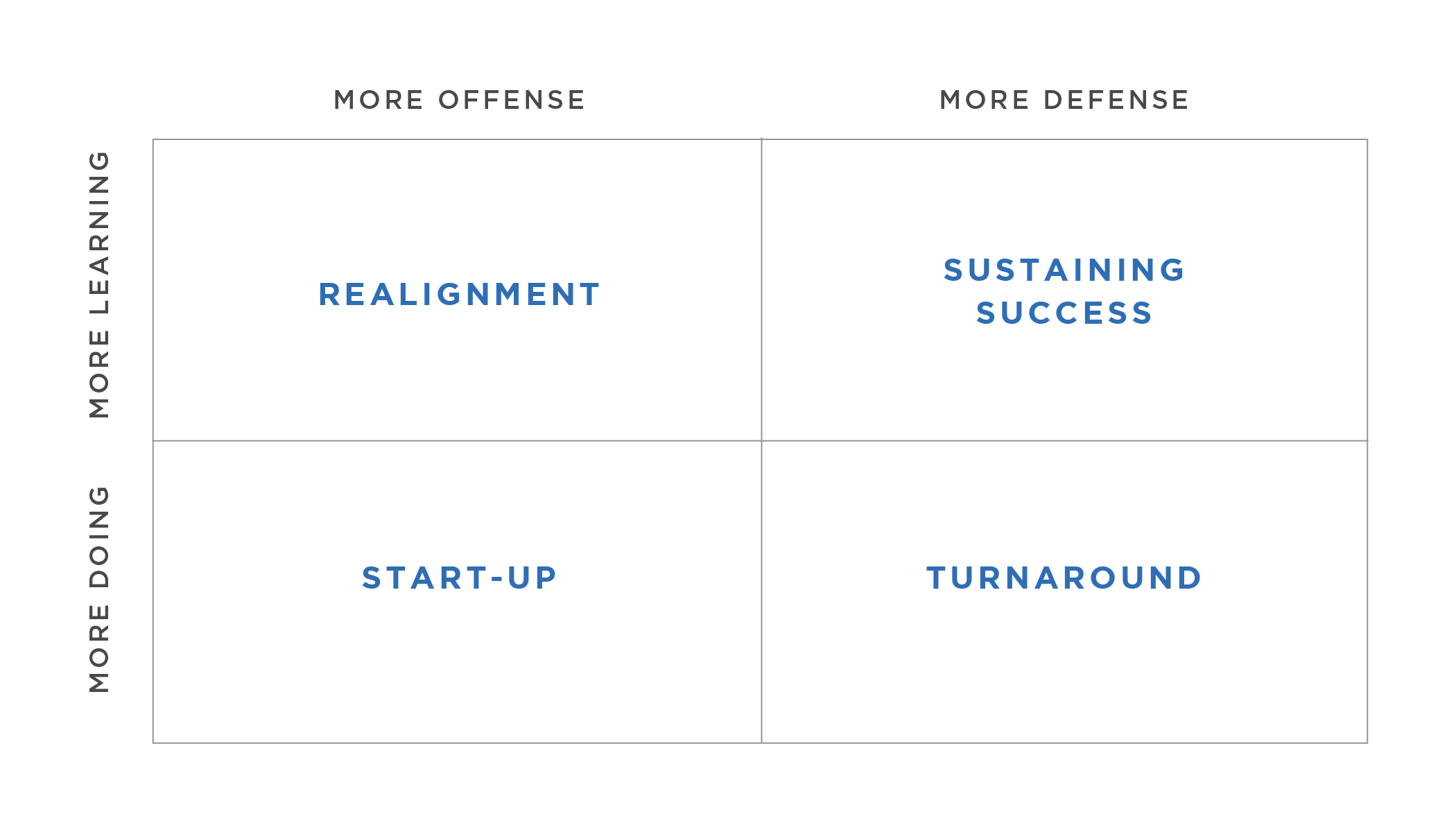In his book, The First 90 Days, Michael Watkins offers this framework as a tool to help leaders think through the phases of the organization or team the leader is entering.

What I Appreciate About This Framework
I love that the framework emphasizes the leader should (1) understand the context and (2) adjust leadership to that context. The thinking beneath the framework emphasizes both wisdom and servanthood. A wise leader listens, discerns, and exegetes the current context he or she is leading, and the leader must do so with a servant’s posture. The framework essentially sets the leader up as the servant. Servant leaders adjust to the needs of the organization rather than insisting the organization adjust to them.
How the Framework Has Helped Me
I have led in all four phases of organizational life and am convinced each context demands unique thinking, unique speeds of decision-making, and differing levels of urgency. Here are two different examples from my leadership in the last five years. When coming to Mariners Church as Senior Pastor, I approached the assignment through the lens of shepherding a sustaining success context. Not that Mariners was or is perfect, as no church is, but she was healthy and I shared with the team that “I was running the Mariners playbook.” I focused on teaching, learning, and loving the people. Then, when the pandemic began, Andy Crouch released an insightful article declaring every organization to be a start-up, and I led with that posture through the pandemic—as the pandemic created new opportunities to serve people.
How to Use the Framework
This framework is helpful to onboard a new leader into a role, but it can also help leaders continually think about different aspects of their roles. If a leader views his or her role as a portfolio, there are likely different programs or disciplines or functions of the business in different stages. This thinking can help a leader adjust his or her approach to the different needs. The most important insight in the framework is the necessity for leaders to match approach to context. A leader who moves into a role that requires start-up energy but wants to bring the methodical approach of a sustaining success posture will not provide the direction or the speed that is needed. At the same time, a leader who moves into a role that requires the patient shepherding of a sustaining success and needs to declare things broken (as required in turnaround leadership) will be deeply mismatched to the context.
Bottomline for Christ-centered leaders: use the framework to help you wisely evaluate your context and remind you of your identity as a servant.
Attached is a PDF of the framework I have used and will use with my team.






